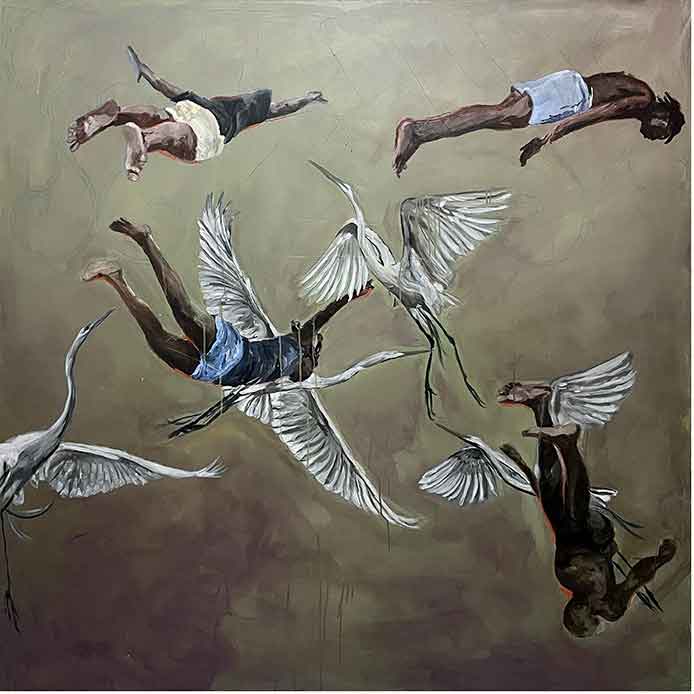Glover’s inimitable canvases celebrate, in vivid colours, the richly visual splendours of his native country. Using warm primary pigments, expressive of an intense solar heat, Glover depicts the vibrant scenes and spectacles playing out daily on the shimmering streets of Accra. He portrays the hidden spirit of the place – the energetic market stalls, the lorry parks and the brightly-attired crowds. Selecting the palette knife rather than the brush as his instrument of choice, Glover applies his oils skilfully, in a thick impasto that, when seen close to, reduces the restless Brownian motion of the bustling masses into a riotous wash of gloriously coloured abstraction.
In 1982, Ablade Glover was the first artist from sub-Saharan Africa to exhibit at October Gallery. Since then, the Gallery has devoted ten solo shows to the colourful and always energetic canvases of this acclaimed master of oil-on-canvas painting. Glover’s latest show, Inner Worlds, Outer Journeys, traces an arc of development, which his younger self, setting out on a journey of inner and outer discoveries, might not have imagined he could ever achieve as part of the unfolding tapestry of an accomplished life in art.

























